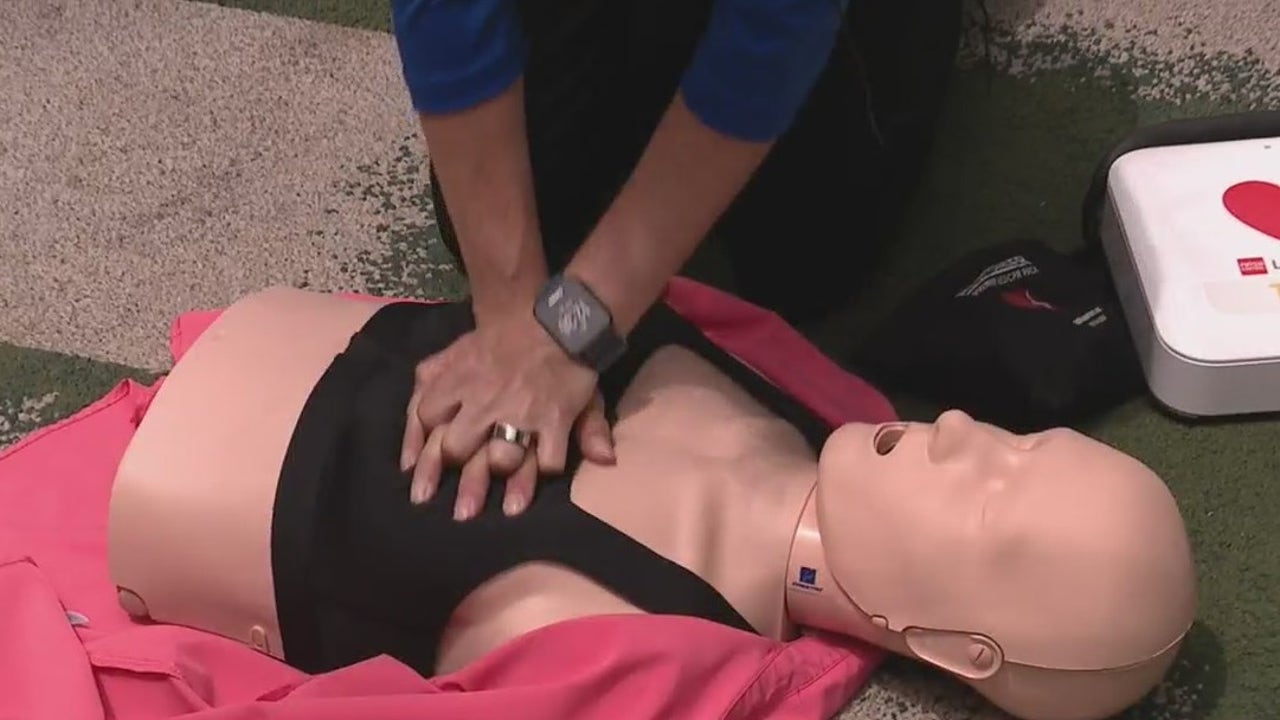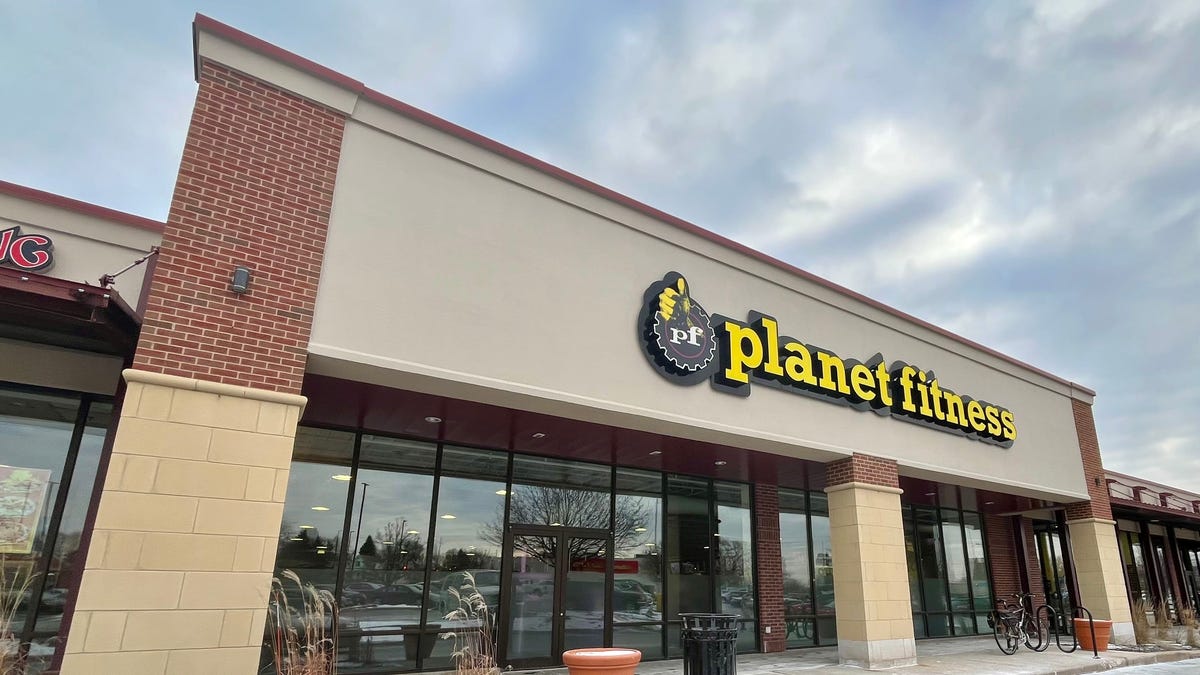Fitness
‘Glitzy’ photos of bodybuilders on stage made Angela want to join them. She didn’t see the health risks
Current and former bodybuilders say competitions can promote harmful eating habits and mental health issues.
Key points:
- Multiple bodybuilders say they developed eating disorders due to strict dieting ahead of competitions
- There is no prominently featured information about eating disorders on the website of any of Australia’s bodybuilding federations
- Competitors are calling for coaches and federations to do more to warn people of the risks
Angela Williams only took part in one bodybuilding competition, in 2018, but said the weight fluctuations she experienced afterwards caused years of back problems.
“You just see the glitzy, glam photos on stage when people are doing well,” she said.
“You don’t see as much about people having breakdowns, the hormonal issues and back problems.”
Ms Williams did not feel she received enough education about bodybuilding’s physical and mental risks when she competed.
“Some of the organisations probably have disclaimers on their website,” she said.
“But I don’t think young girls or people who are looking to compete would read the fine print.”
Ms Williams is one of several current and former competitors claiming the physical demands of tournaments within Australia’s bodybuilding industry make eating disorders common.
Comps mean ‘competitive starvation’
Sydney bodybuilder Georgia Kapp knew she had developed an eating disorder because of her competing when she was hiding in a pantry, devouring an entire packet of biscuits in under two minutes.
She had been restricting her food intake for an upcoming competition in 2020, and when it was cancelled, her appetite skyrocketed.
“I was in the cupboard for a minute-and-a-half, hiding the fact I was finishing a packet of Tim Tams from my partner,” Ms Kapp said.
She hid her binge eating from friends and family, which strained her relationships and mental health.
Melbourne strength trainer Geordie Collins lost significant weight in just a few months while preparing for a bodybuilding competition.
He said competitors should be warned about the potential risks.
“It’s competitive starvation,” Mr Collins said.
“If you’ve done bodybuilding you can’t argue with that.”
Competing federations
Australian bodybuilding is governed by several competing federations, most of which are subsidiaries of groups in the United States.
Each federation has codes of conduct and tournament rules.
Ms Williams, Ms Kapp, and Mr Collins have competed for I Compete Natural (ICN) Australia, which is a bodybuilding organisation that abstains from performance-enhancing drugs.
“ICN competitors, therefore, have a strong focus on their health and understand the effects, benefits and outcome of correct exercise and proper nutrition,” said ICN Australia president Tony Lanciano.
“A bodybuilding and fitness contest without drug use has a much lower physical expectation and standard compared to what can be achieved if using banned growth agents.”
Mr Lanciano says ICN motivates competitors to focus on personal improvement rather than to “win at all costs”, which “may encourage unhealthy practices”.
“Anyone wishing to improve their health and fitness can find a place in ICN to participate and compete without resorting to unhealthy practices and/or drugs,” he said.
Calls for more support
University of Melbourne senior research fellow Scott Griffiths says more support needs to be made available to competitors, and existing guidelines should be enforced more strictly.
He says bodybuilders must seek help when recognising signs of eating disorders or thoughts.
“You are the best-positioned person to know when it’s starting to unravel psychologically,” Dr Griffiths said.
The Butterfly Foundation, which supports Australians with eating disorders, says competition focusing on appearance and intense exercise could encourage disordered eating.
“Desiring a more muscular body shape can increase body dissatisfaction, which is a major risk factor in development of eating disorders,” said the charity’s Melissa Wilton.
Ms Williams says people getting into bodybuilding should seek advice from qualified experts to help them compete safely.
“Get yourself a good mentor or a good coach who is aware of the pitfalls of competing,” she said.
“Someone who is genuinely invested in your health and safety and can give you proper advice on how to compete safely.”
Bodybuilding organisations World Natural Bodybuilding Federation Australia, the International Natural Bodybuilding Association, and Australasian Natural Bodybuilding have been contacted for comment.

Fitness
Study finds doing this five-minute workout daily can ‘significantly improve fitness’
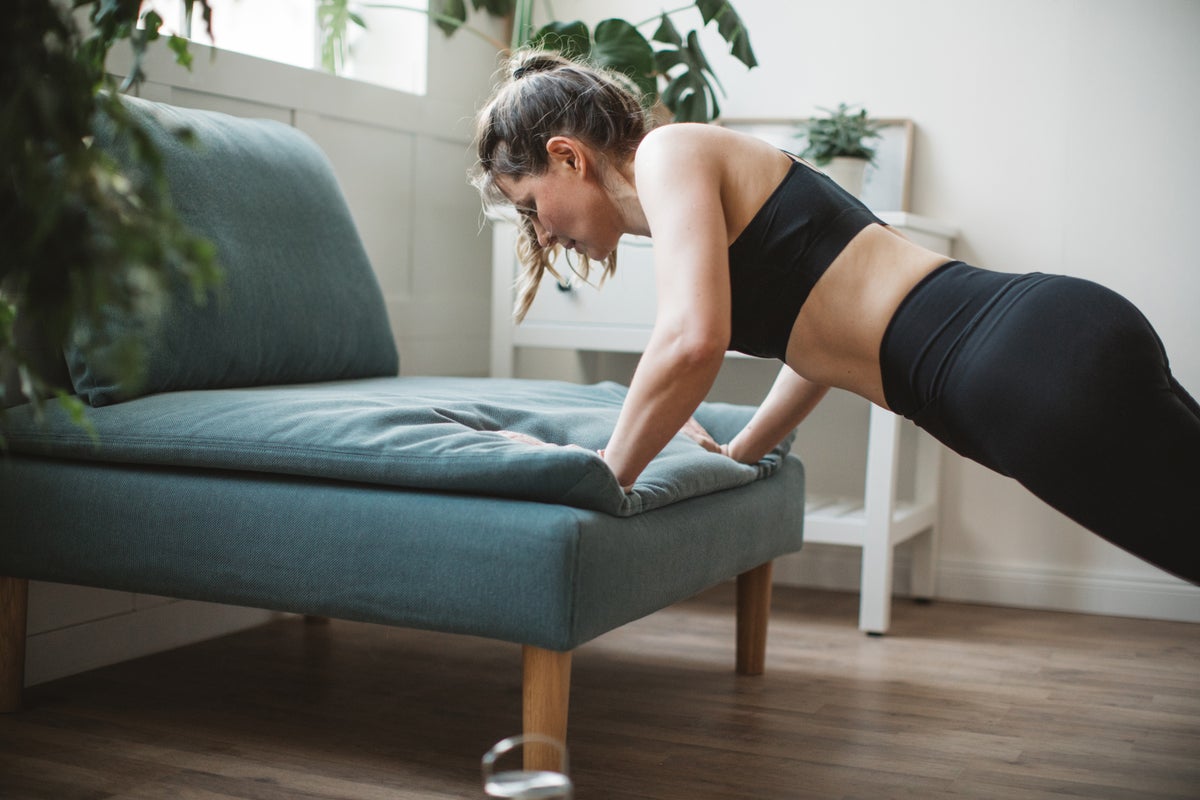
There’s a common misconception that you need to spend an hour in the gym, several times per week, to make a dent on your health and fitness goals. But for most people, this simply isn’t the case.
Instead, any regular activity is likely to have an impact. A recent study published in the European Journal of Applied Physiology supports this, finding that a five-minute strength training routine, performed daily for four weeks, led to “significantly improved physical fitness and mental health in sedentary individuals”.
As far as I can see, the routine was nothing groundbreaking either, comprising progressive variations of the bodyweight squat, press-up, sit-up and calf raise. The progressive nature and consistency with which these exercises were performed is where the magic truly lies.
Though the sample size is small, what the study shows is that small amounts of exercise, and strength training in particular, can offer untold perks for beginners. I investigated why this might be the case, and how you can use this information to efficiently further your own health and fitness.
The workout
- Chair squat x10
- Wall press-up x10
- Chair recline x10 (similar to a sit-up, but performed in a chair with less range of motion)
- Heel drop x10 (a calf raise)
The “healthy but sedentary” participants of this study – four men and 18 women aged between 32 and 69 – performed 10 repetitions of each exercise to a strict tempo. This meant elongating the eccentric (or lowering) phase of each repetition for five seconds, then completing the concentric (or lifting) phase in roughly one second.
For the chair squat, for example, this would involve sitting down slowly over the course of five seconds, then standing up as normal.
“Participants were allowed to choose the time at which they completed the exercises, and the exercises could be performed together or spread throughout the day,” the research adds.
Once participants could complete 10 repetitions of an exercise with an RPE (rate of perceived exertion, or how hard an exercise feels) score of five out of 10 or less for two consecutive days, they were instructed to progress to a more challenging variation of the exercise. These variations were:
- Chair squat > one-leg chair squat > pistol squat
- Wall press-up > one-arm wall press-up > table press-up > knee press-up > press-up
- Chair recline back > chair recline back (legs straight) > sit-up
- Heel drop > heel drop overstretch > one-leg heel drop overstretch
Again, I want to stress that this isn’t a magic formula. It simply plays on tried and trusted strength training principles – progressive overload and a combination of exercises which recruit most major muscle groups – to deliver the stimulus needed for positive changes in people new to this type of exercise.
The main takeaway should be that just a few short minutes of adequately challenging resistance training per day, even without weights, can make a significant difference in sedentary populations.
Read more: How doing squats between emails could boost your health in midlife
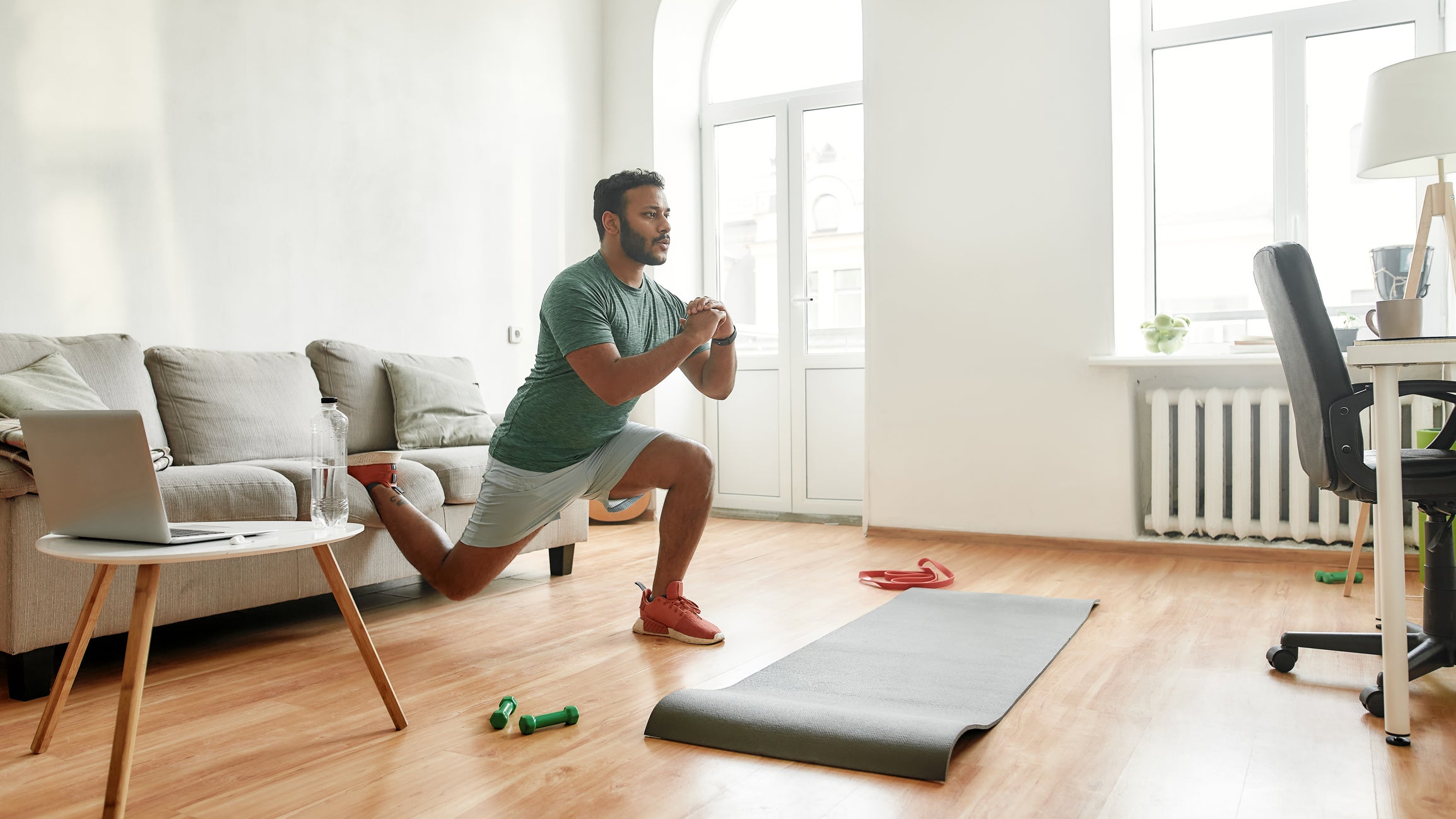
What this means for your fitness
This article isn’t aimed at people who run marathons for fun or sign up to every Hyrox race going. Instead, it speaks to anyone who wants to improve their health and fitness, but struggles to find the time, energy and motivation to squeeze exercise into their busy lives.
For this group, it’s important to understand that small amounts of activity, performed consistently and progressively as in the study above, can have a significant impact.
“Most evidence shows that even doing very small amounts of exercise or physical activity is beneficial for health, but more is better for us,” says Dr Richard Blagrove, a senior lecturer in physiology at Loughborough University.
As a case study, he cites research published in the British Journal of Sports Medicine, which found that those burning a bonus 500 calories across the week, averaging out at just 70 calories per day, “show reductions in risk of mortality compared to being completely inactive”.
“The same is true for resistance training,” he adds, with research finding that just one challenging set of an exercise can increase strength, thus benefitting “functional performance” – i.e. how well our bodies can serve us in daily life.
Read more: Will the run club replace the pub? Why choose when both can help fight a deeper issue?

This favourable dose-response relationship is something Joe Wicks stresses in his approach too. Wicks has been visiting workplaces across the UK as part of a new initiative on movement and wellness, and says he’s witnessed a night and day difference between people who did and didn’t find time to exercise.
“I visited all of these companies, and you’d see people that are really struggling, people who are really busy, and people with kids who are working 12-hour shifts through the night,” says Wicks.
“What I realised is there are usually two groups; one of them is not exercising, and one of them is finding a little bit of time to do some form of exercise, whether it’s 10 minutes walking to work, something on their lunch break or a 20-minute YouTube workout when they get home.”
This latter group, he says, were healthier and more energised, with lower stress levels and better mental health. For this reason, he likes to highlight the importance of finding some time, however short, to move during the day.
“I want to make it really manageable and say, ‘Look, you might not have a full hour today, but do you have five, 10 or 15 minutes?’ It makes a difference,” he explains.
Walking and home workouts like his session below are Wicks’ premier prescriptions for beginners, with these accessible activities removing many of the usual barriers to entry for exercise such as time and money.
Read more: Forget the gym – build full-body strength anywhere with this trainer-approved kettlebell workout instead
Another top option is exercise snacking – the act of microdosing fitness throughout the day. It’s a wellness trend that’s both easy to access and adhere to, no matter your fitness level.
A four-week study by the University of Essex and University of Suffolk found that just 16 total minutes of bodyweight exercises such as squats and lunges, spread across an eight-hour work day, “can mitigate against the negative effects of prolonged sedentary time [or sitting at a desk all day]”. Subjects saw improved leg strength and balance from the minimalist exercise plan.
Meanwhile, research in the Exercise and Sport Sciences Reviews journal honed in specifically on the term “exercise snacks”.
It defined the phrase as “isolated bouts of brief (
Read more: This is how much exercise you should be doing per day, according to experts

The foundational theory behind this is called the SAID principle, which stands for specific adaptations to imposed demands. This simply means the body will adapt over time to get better at handling the things we consistently ask it to do.
If we sit in a chair all day, it might tighten our hip flexors to save us some energy. However, this is likely to feel unpleasant when we go to lengthen them again while walking or exercising.
Conversely, if we’re regularly raising our heart rate, cardiorespiratory fitness improvements are likely to follow, while consistent and challenging resistance exercise will lead to improvements in strength and muscle, provided we’re fuelling and recovering appropriately.
For this reason, any long-term change in behaviour which sees you challenging yourself physically and doing more than you were before will probably result in positive adaptations to your body.
This is partly why those who have been exercising for a long time require more dramatic changes to see progress, while newcomers can make incredible headway from just a few small tweaks like those discussed above.
Read more: Helen Mirren opens up on ‘complications’ of ageing as she shares advice for younger people
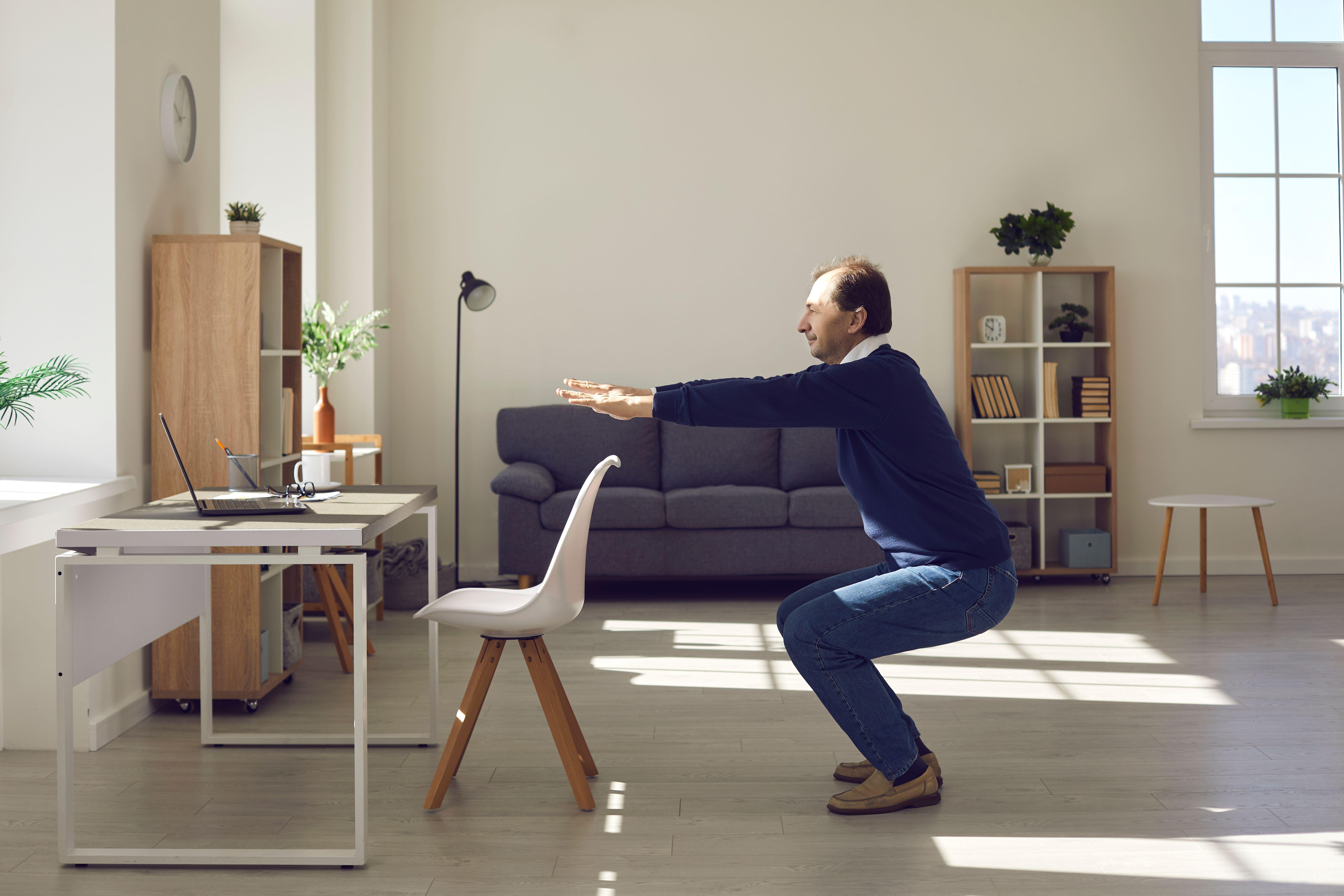
Key takeaways – and a free workout plan to try
The bottom line here is that, as far as exercise is concerned, a little goes a long way. This is especially true if you’re a beginner.
The title study shows how a few quick exercises can improve strength and mental health in sedentary adults, while the further research referenced above suggests these benefits also extend to cardiorespiratory fitness – the ability of the heart, lungs and blood vessels to supply oxygen to your working muscles during exercise.
If you want to put this information to good use by weaving some time-savvy exercise into your hectic schedule, my best advice would be to first pick one exercise you can do for each of strength coach Dan John’s basic human movements (push, pull, hinge, squat, carry). Then, perform each exercise for 8-12 repetitions, between one and three times throughout day. For example:
- Push: Wall press-up x8-12
- Pull: Bent-over row with a rucksack x8-12
- Hinge: Good morning x8-12
- Squat: Chair sit-to-stand x8-12
- Carry: Suitcase carry with a rucksack x8-12m in each hand
You might do this immediately after waking up, on your lunch break or whenever you boil a kettle while working from home – I realise this may draw a few funny looks in the office kitchenette.
When an exercise feels easy, find a harder variation or, in the case of the row and carry, incrementally increase the weight you’re lifting so it continues to provide a challenge. Et voila: an equipment-free beginner exercise plan for even the most time-poor of people.
Read more: The three short weekly workouts that can transform your fitness
Fitness
Fitness coach who helped Nita Ambani, Anant Ambani lose weight shares why workouts alone may not help shed kilos

Jun 01, 2025 04:59 PM IST
Fitness coach Vinod Channa reveals why many fail to lose weight despite regular workouts, stressing the importance of balanced nutrition and consistency.
Fitness
From strength training in your 20s to yoga in your 80s: how to reach peak fitness at any age

When Baz Luhrmann called the body “the greatest instrument you’ll ever own” in his 1997 song, Everybody’s Free (to Wear Sunscreen), he was on to something. Alongside a nutritious diet and good sleep, how fit we are is perhaps our greatest tool to live a long and healthy life. But what constitutes optimum physical fitness? According to David Vaux, osteopath and author of Stronger: 10 Exercises for a Longer, Healthier Life, it’s measured across different pillars of health, including cardiovascular fitness, flexibility, strength, mobility, stability and balance.
Research shows that those who do regular exercise are less likely to succumb to premature death, as well as reducing the risk of developing a number of diseases, including type 2 diabetes, cardiovascular disease and mental health disorders. But fitness is about much more than just warding off ill health. Being able to move functionally – whether that’s picking up our grandchildren, hauling boxes around or going on long hikes – is crucial to enjoying life and feeling energised, mobile and able to take care of ourselves into our later decades.
The old adage “use it or lose it” couldn’t be more applicable, but where to start? Here’s how to reach peak fitness in every decade of your adult life.
20s: focus on functional moves
Your body is adaptable and hormones are on your side, so focus on building lean muscle mass and a healthy nervous system with a broad diet of activity.
From contact sports to tennis, sprinting and hiking, making movement a consistent habit is helpful for long-term adherence, with strength training – any form of exercise that involves lifting weights or resistance (including body weight) to build muscle – a priority to stimulate bone growth and density.
“This is important because bone health at age 30 determines what it will be in later life,” says consultant physiotherapist Florence Penny. Aerobic capacity naturally declines in our mid-30s, so do plenty of walking, running and/or jogging to create a higher baseline and ensure your heart, lungs and muscles are stronger and more efficient. The improvements you make at this age will remain well into your later decades.
The sky’s the limit for peak fitness in this decade, but Vaux says that if you can nail the foundational movements – including the shoulder pull, press-up, plank, squat and lunge – using just your body weight, then you’re off to an excellent start. Aim to complete four to five sets of eight to 12 reps. You can add weights afterwards – if you can do a minimum of three squats with a weight equivalent to your body and overhead press three-quarters of your body weight, you’re doing well. Test your aerobic fitness by doing a 1½-mile run; women and men should aim for 13 and 11 minutes, respectively.
30s: hiit training is a great option
Strength training becomes more critical to guard against natural muscle depletion and keep metabolic health strong. “Focus on compound movements – think squats, dead lifts, push/pull movements and carries – to work multiple muscle groups at once,” says personal trainer and performance coach Niki Bird, adding that you should work out about four times a week for between 30 and 60 minutes. Concentrate on building power by adding fast spurts of these movements using lighter dumbbells during your sessions.
Make sure you get your cardio in, too – it’s great for energy, recovery and reducing risk of cardiovascular and respiratory diseases. When performed properly (at 80% effort during “work” phases) high-intensity interval training (Hiit) is a great option for the time-poor and can improve hormonal responses and boost fitness, without putting the body under excessive stress. Although rather odious, sprint intervals – 30 seconds sprinting, 90 seconds walking – are incredible for quick improvements, especially when done twice a week.
To test your fitness? “Aim to hold a 60-second plank, perform 10-15 full push-ups and deadlift your body weight (ie those who are 75kg should build up to that), with strong awareness of doing the movement correctly,” says Penny. One study found that the more press-ups individuals could do in a minute, the less likely they were to suffer from cardiovascular disease – those who could do 40 saw a huge 96% reduction in risk.
40s: try a ‘grip and lean’
It is about the age of 40 that our muscle mass really starts to decline – at 3-8% each decade. The key is to continue (or start, if you haven’t already) with strength training, while ensuring minor injuries including tightness, aches and pains, get treated professionally.
“With hormonal shifts, energy fluctuations and changes in metabolism, this decade is about working smarter, not harder, and focusing on workouts that deliver maximum benefits,” says Penny. “Lift weights regularly and incorporate lower impact cardio options, such as cycling, rowing and swimming, to protect joints.”
Grip strength is an excellent indicator of how fit you are in your 40s. “It is independently associated with longevity and health span,” says Vaux. Try a “grip and lean”, an isometric exercise in which you tie a towel or firm band around a banister and lean back with straight arms – start with two sets of 15-30 seconds, and build up to two minutes. When you can do that, upgrade to an overhead bar hang – a minute and a half is a great target for women, while men should aim for two.
50s: incorporate eccentric exercise
If you can do 10 controlled body-weight squats and walk 400 metres in under six minutes, you’re on track for optimal fitness in your 50s. “The ageing process is notable by this decade, with most people experiencing natural sarcopenia (loss of skeletal muscle mass), and a decrease in maximum strength, power and metabolism as a result,” says Penny. The perimenopause in women and a drop in testosterone in men mean that building muscle and quick recovery after a workout are harder than before.
Do not slow down – midlife is a pivotal time and dictates how you’ll fare in later life – but rather, train with intention. Continue with regular resistance training, ensure you’re doing some Hiit to keep cardio health high, and honour two rest days a week.
Challenge yourself with a farmer’s carry, which involves holding and walking with kettlebells or dumbbells by your sides for a minute to improve core and shoulder stability and grip strength. Women and men should aspire to carry 75% and 100% of their body weight (half in each hand) respectively, says Vaux, who adds that you have to build up to it.
after newsletter promotion
60s: the ‘old man’ test
Those who have been active over the years may already have a solid foundation in this decade, but if you don’t, it’s never too late. Assess yourself using the 60-second “old man” test, which is a good indicator of functional strength, balance, coordination and flexibility: “If you have a stiff back or hips, then it’s tricky,” says Vaux. Lift one bare foot, put on a sock and shoe, then tie your shoelaces while it’s still elevated. Repeat on the other side. If you can do both sides with ease (and without dropping your foot) you’re doing well.
If you find it tricky, now might be the time to incorporate more mobility, balance and fall prevention work into your routine. That could be lifting alternate legs up while you clean your teeth, or trying some tai chi which is gentle but great for balance. Bird also recommends including isometric exercises (where you hold a static position) to improve tissue health and strength – try a wall sit for 45 seconds, holding your legs in a 90-degree “chair” squat shape, while leaning against the wall.
Trainers, £49.99, Zara. Model: Larraine at Body London. Hair and makeup: Celine Nonon at Arlington Artists. Photograph: Dan Matthews/The Guardian
Don’t underestimate the power of small movements done in pockets of time throughout the day, either: “Whenever you sit down, whether that’s on your sofa, the toilet or at work, do it in slow motion,” advises Vaux. “Then you’re also enjoying the benefits of eccentric movement throughout the day, which can transform your ageing experience.”
A recent study found that just five minutes of eccentric exercise (movements that work to lengthen the muscles, such as lowering into a squat or heel drop) a day can improve strength, flexibility and mental health in sedentary adults in just four weeks.
Activities such as gardening also count – short, sharp bursts of manual labour are brilliant for our strength at every age.
70s: get your resistance bands
In your 70s, peak fitness is even more about preserving independence than in previous years. Strength training, once again, is the gold standard, says Dr Michael Sagner, director of the European Society of Preventive Medicine. For decades, experts assumed aerobic training was essential to improving health in those over 65, but new research proves that strength training is one of the most effective age-related interventions there is.
Working with weights, resistance bands or body weight has been shown to combat age-related frailty, significantly decrease the risk of falls, fractures and disability, stimulate tissue regeneration and improve walking speed, to name just a few. Beyond physical fitness, it also improves our mental agility, boosting “brain-derived neurotrophic factor, which improves memory while combating cognitive decline”, adds Sagner. Try doing a chest pull, biceps curl, leg press and bent-over row with a resistance band (placing a long band underneath a foot, then pulling upwards), and aim for three sessions per week. If you’re using weights, lifting 7-9kg for these is excellent.
A good measure of how fit you are right now? Try the 30-second sit-to-stand test. With your arms crossed and held against your chest, sit on a kitchen chair, then stand up and sit down as many times as you can within 30 seconds. You should expect to complete this 14 times if you’re moderately fit.
80s: walk unaided
Can you walk unaided for 10 minutes? If the answer is yes then you’re in good form. The one-legged balance test, in which you lift a foot an inch or two off the floor, then keep it there for 10 seconds, is a good test of physical health in your 80s. Whatever level you’re at, try adding some gentle exercises using a resistance band – think seated rows, banded side steps and overhead side bends – alongside some short walks every day.
Flexibility and joint mobility is of the utmost importance to prevent falls – which are responsible for approximately two-thirds of all injury-related deaths during this decade. Try a dedicated low-impact practice, such as yoga or pilates, once or twice weekly to help you maintain independence and confidence in your body’s ability.
-

 World1 week ago
World1 week agoNeo-Nazi cult leader extradited to US for plot to kill Jewish children
-

 Business1 week ago
Business1 week agoPlastic Spoons, Umbrellas, Violins: A Guide to What Americans Buy From China
-

 World1 week ago
World1 week agoCade Cunningham Gains $45 Million From All-NBA Honors
-

 Movie Reviews7 days ago
Movie Reviews7 days agoMOVIE REVIEW – Mission: Impossible 8 has Tom Cruise facing his final reckoning
-

 Movie Reviews1 week ago
Movie Reviews1 week agoKapkapiii movie review: Horror-comedy signals a saturation point for the genre
-

 Movie Reviews1 week ago
Movie Reviews1 week ago‘Magellan’ Review: Gael Garcia Bernal Plays the Famous Explorer in Lav Diaz’s Exquisitely Shot Challenge of an Arthouse Epic
-

 Rhode Island1 week ago
Rhode Island1 week agoAssessors find ‘nonconformities’ with national standards at RI Crime Lab. What to know.
-

 Education1 week ago
Education1 week agoVideo: Judge Blocks Trump Move to Ban Foreign Students at Harvard
